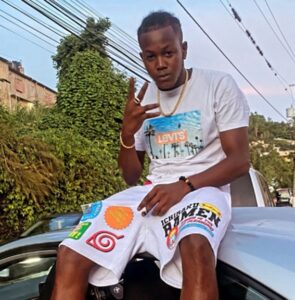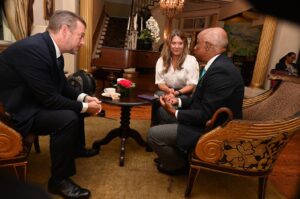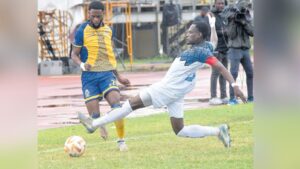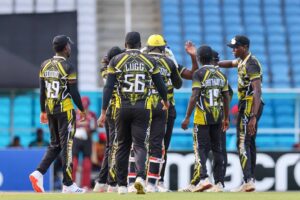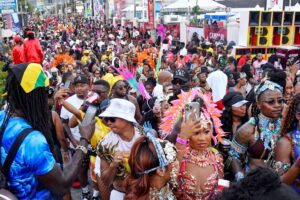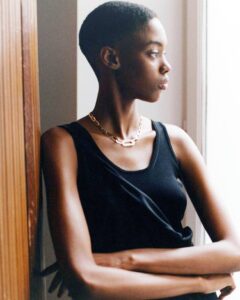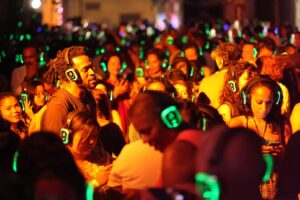
55 Years since the 1962 General Elections… The milestone that charted Jamaica’s nationalism
The Sunday Observer today begins a two-part article written by noted political historian, Troy Caine on the 55th anniversary of the 1962 general election which changed the course of Jamaica’s history and destiny. Part two will be published tomorrow (Monday April 10).
TOMORROW, April 10, 2017 marks the 55th anniversary of the 1962 general election, which changed the course of Jamaica’s destiny and placed the nation squarely on the right side of history with a fervour of national pride and dignity.
The fifth general election since adult suffrage was called on Tuesday, April 10, 1962 (P J Patterson’s 27th birthday), which produced a relatively comfortable victory for the Jamaica Labour Party (JLP) and returned the People’s National Party (PNP) to the opposition benches after only seven years and three months as a two-term administration. It became the second and last time that 45 seats were contested (as the seats were increased prior to the next election), and of the 45 Members of Parliament (MPs) who were elected in 1962, only Edward Seaga has survived. Billy McLaren, the JLP candidate in Manchester North is perhaps the only losing contender still alive of the other 69 candidates that contested the election.
Actually, 1962 was never intended to be an election year, and a general election was not really due until 1964. But after the PNP’s humiliating defeat in the September 1961 Referendum which supported Sir Alexander Bustamante and the JLP’s stance for Jamaica’s exit from the West Indies Federation and for Jamaican independence – largely precipitated by Bustamante’s refusal to contest the St Thomas federal by-election caused by the resignation of the JLP’s Robert Lightbourne from the Federal Parliament, Premier Norman Manley, disappointed, but gracious in defeat, decided to call the general election early to determine which of the two major parties would lead Jamaica into independence.
Although it was a gamble that failed, having the political maturity to call a general election less than three years into his second term when he was not necessarily required to do so, Manley demonstrated a level of principle and statesmanship that must never be forgotten by this country. However, when taken into context, Manley’s reasoning could have been hardly regarded as being reckless. Even though he had won the 1955 General Election by a razor-thin margin of four seats, he scored an outstanding victory in the 1956 Parish Council Elections. And, in spite of losing badly in the 1958 Federal Election, winning a mere five seats to the JLP’s 12, he came back strong in the 1959 General Election to consolidate power by a margin of 13 seats and over 58,000 votes (10.5 per cent) when the constituencies increased from 32 to 45. In addition, there was another huge victory in the 1960 Parish Council Elections when the PNP won 156 divisions to the JLP’s 78, and captured 10 of the 13 parish councils.
So, despite such a chequered electoral scorecard in less than seven years, Mr Manley would have naturally placed much confidence in the PNP’s record of resilience to beat the odds. Indeed, the ’59 election result had revealed that for the first time, the PNP had won seats in all 12 rural parishes, plus complete dominance in the Corporate Area seats to the tune of eight to two, and with seven other safe seats secured in the referendum, one could have hardly faulted Manley’s rationale that attaining (or retaining) another eight seats required for victory in the ’62 general election was not beyond the scope of the PNP.
Therefore, the die was cast, and on March 14, 1962, the Legislature was formally dissolved by Governor Sir Kenneth Blackburne by a proclamation published in a supplement of the
Jamaica Gazette, and the curtains came down on Norman Manley’s second term of 2 years and 9 months, which is still the shortest tenure since 1944. Nomination day would be Monday, March 19, 1962 an election day on April 10.
But the referendum on September 19, 1961 had dealt a telling blow to the organisation and confidence of the incumbent PNP. They were routed in 31 (69 per cent) of the 45 seats and by an overall margin of 38,942 votes (8.2 per cent) when the electorate voted with the JLP for “No” Federation and in support of Jamaica’s independence. By April 1962, Bustamante and the JLP were on a roll. With tangible support only in the Corporate Area (8-2), Manchester (3-0), St Ann (3-1) and Westmoreland (2-1), the rest of rural Jamaica virtually turned their backs on the PNP and overwhelmingly voted the JLP back into power with a 73 per cent voter-turnout, Instead of getting those eight additional seats to secure victory, the PNP ended up losing 11 seats to the JLP (sounds familiar?) and won only 19 seats to the JLP’s 26.
In 1962, political symbolisms were not yet as entrenched and in vogue as they are today. There were no party colours assigned to any of the two major parties, and it was not until 1971 that the PNP formally adopted orange as their party colour, later followed by the JLP with green as their colour in 1975. The PNP was also the first to adopt an anthem, “Jamaica Arise” in the early years of the Party, while the JLP’s “Stand Up Jamaica” was produced decades later in 1980. “Freedom,” a song performed and produced by Clancy Eccles was both a song and a slogan effectively utilised by the JLP in the Referendum and 1962 election campaigns.
But the PNP’s very unfortunate ’62 slogan: “Manley-The Man with the Plan” was also effectively reversed by the JLP to be interpreted that Manley was indeed the man with the plan to sell out Jamaica to the Russians, allegedly in Russian ships docked off the Jamaican coast in preparation for a “communist takeover” of the island. The hottest rumour of ’62, it did have some appeal to the gullible and perhaps some psychological effect on others, but hardly enough to influence the result of the election.
Of the 796,540 listed voters in 1962 (56,999 less than the 1959 list), a total of 580,517 (72.9 per cent) voted, which was the highest voter-turnout to date in a general election, and an increase of 16,446 votes (6.8 per cent) over the ’59 turnout. The JLP polled 288,130 votes (49.6 per cent) and won 26 (58 per cent) of the seats, while the PNP polled 279,771 votes (48.2 per cent) and took the other 19 seats (42 per cent). Only one third party, Millard Johnson’s resuscitation of Marcus Garvey’s People’s Political Party (PPP) contested the election, and their 16 candidates polled only 4,955 votes (0.9 per cent), but some eight Independent candidates who polled a mere 2,923 votes (0.5 per cent), included former JLP Member Rose Leon, former PNP MPs A G S (“Father”) Coombs and Livingston Wedderburn, and Samuel E Brown in West Kingston, the first Rastafarian to contest a parliamentary seat in Jamaica.
Only 23 of the 45 constituencies had straight fights, but the successful candidates gained absolute majorities in 44 constituencies. Victory margins ranged from a high of 6,943 (77.5 per cent) by Sir Alexander Bustamante in South-East Clarendon to a low of 160 (49.9 per cent) by the JLP’s Roy McNeill in Central St Catherine, although the PNP’s William Seivright polled the most votes, 13,508 (60.2 per cent) in West-Central St Andrew. That seat also had the most registered voters (29,773) and the highest number of votes polled (22,428), but West Kingston with 81.7 per cent (and not yet with Tivoli Gardens) had the highest voter-turnout, and North-East Clarendon the lowest with 62.5 per cent.
Only five Members: Roy McNeill, C L A Stuart (PNP, West St Mary), Felix Toyloy (JLP, South Trelawny), Iris King (PNP, West-Central Kingston), and Dr Herbert Eldemire (JLP, North-West St James) won by less than 500 votes, while just nine Members had margins in excess of 4,000 votes – the JLP’s Bustamante, Donald Sangster, Oswald Douglas and Rupert Terrier, and the PNP’s Norman Manley, Florizel Glasspole, William Seivright, Dr Ivan Lloyd and Keble Munn.
The 1962 General Election brought only 10 new faces into Gordon House — eight for the JLP which included Edward Seaga (West Kingston), Wycliffe Martin (Central St Mary), Robert Charles McFarlane (South-East St James), Cleveland Stanhope (West Hanover), Winston Swaby (West Westmoreland), Oswald Douglas (South-East St Catherine) and Roy McNeill, with the other two for the PNP, Allan Isaacs (West-Rural St Andrew) and Elon Wilson (North-West St Ann).
But the election also signalled the return of four former JLP MHRs, namely Edwin Allen in North-West Clarendon, Cleve Lewis in North-West St Elizabeth, Felix Toyloy in South Trelawny and Ken Jones in East Portland. And, the list of eight former MPs who lost their seats – all PNP – were: Ken Wright (East Portland), Rev Cyril Morgan (South-East St James), Lascelles Murray (West Hanover), Rudolph Robinson (Julian’s grand-dad, West Westmoreland), Gilbert Chamberlain (North-West St Elizabeth), O Alphansus Malcolm (North-West Clarendon) and former Cabinet ministers, Johnathan Grant (Central St Catherine) and Ken Sterling (Central St Mary).
Most of the former Federal Members who contested seats did not fare too well either. Four of them, the JLP’s Lionel Densham (St Elizabeth), and the PNP’s Howard Cooke (St James), A U Belinfanti (Trelawny), and Winston B Williams – a JLP Federal turncoat (St. Catherine) all suffered defeat, and only the JLP’s Robert Lightbourne (St Thomas) and Winston Swaby (Westmoreland) were successful. Other notables who bit the dust in the election included Dudley Thompson, Carl Rattray, Wilton Hill, E C L Parkinson, Ben Cox, Isaac Matalon, Frank Spaulding, Talbert Forrest, “Bully” Joseph, Billy McLaren, Arthur Williams Snr., Esme Grant, Lawton Bloomfield, Joseph McPherson and Rose Leon.
At least 25 (56 per cent) of the 45 Members elected in 1962 were former parish councillors who stepped up to grace the corridors of Gordon House, and almost equally divided between the two major parties. Among them were Donald Sangster, William (“The Commodore”) Seivright, Keble Munn, John Gyles, Roy McNeill, Ernest Peart, Iris King, Matthew Henry, Charles L A Stuart, Arnold “Dutty Shut” Jackson, Wycliffe Martin, Elon Wilson, C D (“Poco”) Wright, Andrew Ross and Max Carey.
Sadly, there were a few political pioneers from 1944 who never lived to see the significance of 1962. These included former finance ministers, Sir Harold Allan (Ind) and the PNP’s Noel Nethersole; former JLP Agriculture Minister Isaac Barrant, former JLP Education and Labour Minister Jehoida McPherson and former JLP Members, Matthew Thelwell and Rev Felix Gordon Veitch, the first Speaker of the House. Others such as Iris Collins-Williams, L W Rose, “Slave Boy” Evans, E V V (“Dawda”) Allen and William Dixon were already out of the system.
Overall, the 11 seats won by the PNP in 1959, lost in the Referendum and lost to the JLP in 1962 were the essence of the JLP’s success in the ’62 election. Those seats, scattered across 10 parishes were: W Kingston, E Portland, C St Mary, S Trelawny, SE St James, NW St James, W Hanover, W Westmoreland, NW St Elizabeth, NW Clarendon and (the first) C St Catherine. But in five other constituencies where the JLP triumphed in the Referendum, namely WR St Andrew, N Manchester, NE St Elizabeth, East and Central Westmoreland, they were unable to hold them in ’62 because the latter four were traditional PNP bastions, and in WR St Andrew, former JLP legend Madame Rose Leon had returned as an Independent who polled 1,615 votes (10.2 per cent) and became the spoiler who ruined the JLP’s chances with “Bully” Joseph, allowing the PNP’s Allan Isaacs to slip home on the rails. Indeed, West-Rural St Andrew was the only seat won by the JLP in 1959 and the Referendum that they lost in 1962.
The most exciting contests in ’62 were, of course, the 10 closest which were won by less than 700 votes. – such as Eddie Seaga vs Dudley Thompson in W Kingston where Seaga won by 680 votes; Roy McNeill vs Johnathan Grant in C St Catherine where McNeill scraped home by 160 votes; Esme Grant vs Matthew Henry in C Westmoreland where the affable cane farmer from Blackness had to fight off a stiff challenge from the popular school-teacher to eke out a 539 margin; Iris King vs Ivan Moore in West-Central Kingston where the first female Mayor of Kingston prevailed by only 421 votes; and Talbert Forrest vs C L A “Maas Claude” Stuart in West St Mary where the latter attained a third victory by merely 297 votes.
But my most memorable 1962 election night experience as a third-former listening to the radio coverage with my mother at a neighbour’s residence (who did not share our political views) was undoubtedly the NW St James contest between Howard Cooke and Dr Herbert Eldemire, which turned out to be a humdinger all night. The excitement of the vote-count,was the swinging from one candidate to the other with each set of boxes counted, and both sets of party supporters lining both sides of Barnett Street, cheering with every count until the last box and the final result, which declared Dr Eldemire the winner by just 434 votes. On reflection, I guess the experience was a timely precursor to my own election-night exposure as a political commentator in later years.
In my neck of the woods In South-East St Elizabeth, the 1962 contest between PNP incumbent B B Coke and JLP challenger Lawton Bloomfield did not promise much excitement. Interestingly, both men were two of Bustamante’s victorious 23 in 1944, but Coke demitted the JLP in early 1947 and had become a PNP icon in the area since 1955, whereas Bloomfield went on to serve as JLP Minister of Communications (1953-55) before losing his South Manchester seat in 1955, and was actually seeking a return to active politics. Bloomfield was also a neighbour to my alma mater, the “city set on a hill” where almost everyone seemed to be PNP-oriented, except for a few courageous Clarendon boys who pinned clips of JLP press ads on their khakis. But in spite of the national JLP victory, the seat remained loyal to Coke and the PNP by over 2,000 votes, and of the 13 seats in the entire County of Cornwall, South-East St Elizabeth was consistent as the only one that had supported the PNP’s “Yes” vote in the referendum.
Troy Caine is a political historian and analyst.
trodencorp@gmail.com




